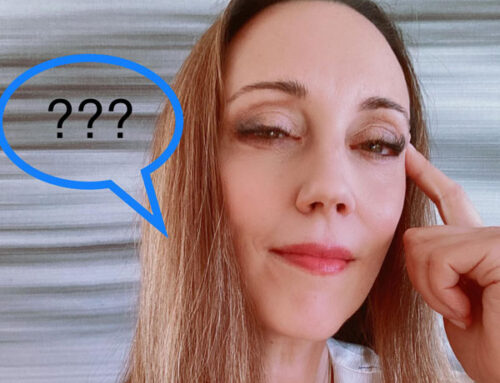“We don’t see things as they are; we see them as we are.” Anais Nin
A friend and former colleague of mine recently posted on Linkedin[i]: “This may be controversial, but sometimes you just need to give up”.
He went on to list a few mantras:
📢 “Winners never quit, and quitters never win.”
📢 “I think I can. I think I can. I think I can. I know I can.”
📢 “Nothing is impossible. The word itself declares, ‘I’m possible!’”
With a knowing smile, my “Type-A” brain introspectively added:
📢 “You’ll miss 100% of the shots you don’t take.” (My personal favourite and frequently used to annoy my son!)
📢 “The secret of success is that you never give up.”
As I read on, I began to feel shame. Shame for having experienced burnout this year, shame for my ongoing battle with anxiety, shame for feeling that I am not achieving as much as I “should”. Shame for taking a break from my blog since January. Shame for feeling overwhelmed. Shame for fearing changes at work. Shame for feeling less present as a mom.
Shame leads to cognitive distortions such “all or nothing” and “should statements” associated with perfectionism. These thought patterns perpetuate cycles of continued anxiety and abasement.
Anais Nin was wise to observe that, “We don’t see things as they are; we see them as we are.”
“When experiencing change, whether at work, or in our personal lives, our emotional reactions often reflect our interpretations – or “stories” – that we convince ourselves are true. In actuality, our stories are often subconscious and seldom in line with reality”[ii].
From pandemic transition to fears of a Third World War, we are trying to grapple with the psychological upheaval and trauma we have yet had time to collectively process. This uncertainty has made us tired and depleted our nervous system. Our collective resilience and surge capacity is expended. To find time to engage in activities that bring joy, never mind simple tasks, can seem like a momentous endeavor when you are already physically and emotionally spent.
I began to reflect on the impact of my life as a transformation professional working in healthcare during a period of unprecedented uncertainty. What is one shift I needed to let go of to preserve my reserves and reset patterns that contribute to continued burnout and anxiety?
In short- my friend’s question was timely: What do I need to give up?
Goal setting helps us move forward to achieving the outcomes we desire. However, goal setting can also be helpful when addressing emotional and mental upheaval. Most of you will be familiar with the SMART model – a valuable tool that is not only applicable in achieving results, (but surprisingly, I’ve learned), used in cognitive behavioral therapy.
What if we re-examined goal setting from the lens of what we need to let go of, to support our holistic well-being?
(Holistic well-being meaning the body, mind, social, and spirit. This includes acknowledging the interconnected nature of our physical body and its health with our mental state and vice versa[iii]. )
SMART goals were developed by George Doran, Arthur Miller and James Cunningham in their 1981 article “There’s a S.M.A.R.T. way to write management goals and objectives”.
The SMART model is traditionally broken down as follows:
Specific: Be clear and focused on exactly what you want. A specific goal has a much greater chance of being accomplished than a general goal. A reframe could look like this: Can I be intentional about one thing I can let go of this week that will allow me to attend to a specific area of my well-being? Will that area be physical, spiritual or mental?
Measurable: Establish concrete criteria for measuring progress toward the attainment of each goal you set. Ask yourself questions such as, “How much?” and “How many?” “How will I know when I have met my goal?” Can I measure changes in my feelings of wellbeing or diminished anxiety based on that one thing I let go of this week? Has the act of letting go allowed me to feel a strengthening in reserves to flex, coil and bounce back?
Achievable: Make your goals attainable! How are you going to make this goal a reality? What can you do to make it more achievable? At the end of this week, I will have identified and purposefully not done something on my task list. I will be intentional in observing the patterns that shifted in terms of my well-being compared with previous weeks as a result of this action.
Realistic: Is your goal realistic given your experiences and resources? This is about motivating you to move forward in stages so you are not overwhelmed or left feeling like a failure. In letting go of something, what have I gained that has made me feel better in myself, and was it reasonable to be able to identify one thing to quit when demands continue thick and fast?
Time-bound: Set realistic time-frames to avoid procrastination or giving up on your goal. What if this was reframed as boundary setting? In giving up one thing, where am I released to enjoy greater balance and improved fortitude? Can I repeat this practice within a set period of time and compare where I was in the past against where I am now?
In our modern world, the pace of change is ever emerging, relentless and complex. I speak often of how making one shift can shift patterns that transform uncertainty, into possibility. Now I’m curious to understand how giving up one thing might do the same.
What is one shift you’ll make towards quitting something today?
[i] https://www.linkedin.com/feed/update/urn:li:activity:6912764978261368832/?commentUrn=urn%3Ali%3Acomment%3A(activity%3A6912764978261368832%2C6912847598349357056)
[ii] https://hbr.org/2018/12/how-to-embrace-change-using-emotional-intelligence
[iii] https://www.healthifyme.com/blog/what-is-holistic-well-being-and-ways-to-achieve-it/#What-is-Holistic-Well-being






This is great Lisa! I really appreciate how you highlight how shame causes cognitive distortions. Happy to have been an inspiration and wish you the best on your journey.